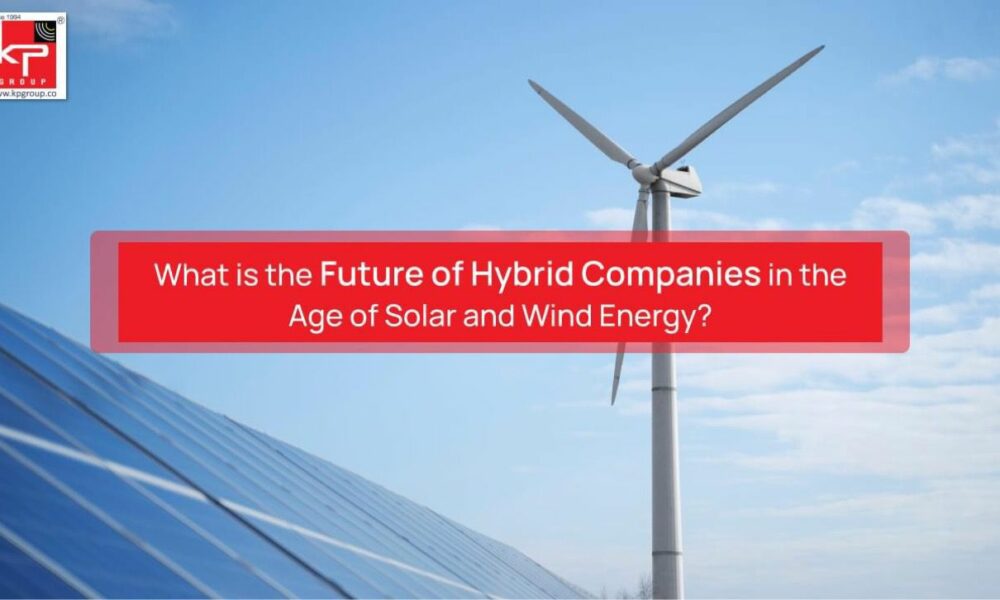What is the Future of Hybrid Companies in the Age of Solar and Wind Energy?

In a world rapidly moving towards renewable energy, the combination of wind and solar energy is a shining example of forward-looking sustainable solutions. The combination of solar and wind power, known as hybrid energy systems, represents the future of renewable energy by using their unique advantages. The role of wind & Hybrid Companies in today’s world is more important than ever, aiming to create a more reliable, effective, and sustainable energy source. Let’s find out more in detail.
1. The Intersection of Wind and Solar Energy
Why Combine Solar and Wind? At the heart of renewable energy’s future lies the strategic combination of solar and wind power. This isn’t merely a juxtaposition of two energy sources but a calculated move towards leveraging their inherent strengths to mitigate weaknesses. But what makes this convergence so potent?
- Complementary Cycles: Solar panels operate at their peak during sunny days, especially in summer, while wind turbines harness stronger winds during the night and winter months. This natural cycle ensures that, at any given time, one of the systems is likely to be generating power, offering a near-continuous energy supply.
- Increased Reliability: The intermittent nature of renewable sources has always been a concern for grid stability. By blending solar and wind, hybrid systems substantially reduce this variability, ensuring a more steady and predictable power output.
- Optimized Use of Infrastructure: Sharing the same electrical infrastructure, including storage and transmission facilities, maximizes efficiency and cuts down on costs, making renewable energy projects more financially viable.
Hybrid systems don’t just offer theoretical advantages; they have practical benefits that are already being realized:
- Enhanced grid stability and reduced need for backup power sources.
- Lower environmental impact due to a decrease in reliance on fossil fuels.
- Potential for increased energy independence and security.
2. Environmental and Economic Advantages
The integration of wind and solar technologies not only stands as a testament to environmental stewardship but also heralds a new era of economic prosperity. Here’s why:
- Carbon Footprint Reduction: Hybrid systems are at the forefront of the fight against climate change, significantly cutting down greenhouse gas emissions by replacing fossil fuels.
- Job Creation and Economic Growth: The renewable energy sector, buoyed by hybrid systems, is a fertile ground for job creation, from construction and maintenance to research and development.
- Cost-Effectiveness: The initial cost may be high, but the long-term savings on energy and the potential for government incentives make hybrid systems economically attractive.
While the environmental and economic benefits are clear, it’s important to consider the broader impact:
- The potential for rural development and energy access in remote areas.
- The role of hybrid systems in promoting energy sovereignty for nations.
3. Challenges and Innovative Solutions
Despite their promise, hybrid energy systems encounter several challenges that could hinder their widespread adoption:
- Technical and Grid Integration Issues: Integrating renewable energy sources into existing power grids can be complex, requiring sophisticated technology and regulations.
- Energy Storage: To truly leverage the intermittent power generated by wind and solar, effective storage solutions are needed to ensure a steady energy supply.
- Public Perception and Community Involvement: Addressing aesthetic and land-use concerns is vital for the successful deployment of large-scale renewable energy projects.
In response to these challenges, the renewable energy sector is witnessing a surge in innovation:
- Advanced Energy Storage Technologies: From lithium-ion batteries to flow batteries and beyond, advancements in storage are key to harnessing the full potential of hybrid systems.
- Smart Grids and AI: The application of artificial intelligence and smart grid technology can optimize energy distribution and usage, improving efficiency and reliability.
- Community Engagement and Policy Support: Transparent dialogue and inclusive policies can foster community support for renewable energy projects, paving the way for their successful integration.
4. The Role of Policies and Regulations
The journey of renewable energy, particularly hybrid systems combining solar and wind, is significantly influenced by the policies and regulatory frameworks set by governments. These guidelines not only aim to foster innovation and growth in the renewable sector but also ensure that the transition to greener energy sources is both efficient and equitable.
- Mandatory Competitive Bidding: Initiatives like competitive bidding for wind projects, introduced to promote transparency and cost-effectiveness, highlight the nuanced approach needed to balance market dynamics with renewable energy goals.
- Land and Grid Connectivity: The success of renewable projects often hinges on the availability of suitable land and the readiness of grid infrastructure. Policies such as the Solar Park Scheme, designed to streamline these aspects, are critical yet face challenges in coordination and implementation across different levels of government.
- Renewable Purchase Obligations (RPOs): These obligations play a pivotal role in creating demand for renewable energy. However, achieving the desired impact requires not just setting ambitious targets but also ensuring strict compliance and addressing the mismatch between supply and demand across states.
The Impact of Policy on Progress
Effective policy frameworks can accelerate the adoption of hybrid energy systems by:
- Simplifying the path for renewable energy integration into national grids.
- Encouraging innovation through incentives for research and development in energy storage and grid management technologies.
- Enhancing public-private partnerships, thereby leveraging private investment in renewable energy projects.
5. KP Group: Leading by Example in Hybrid Energy Solutions
KP Group, as the Best Solar, Wind & Hybrid Company stands out as a leader in the renewable energy landscape, embodying the shift towards sustainable and self-reliant energy solutions in India. With a comprehensive approach that encompasses solar, wind, and hybrid systems, KP Group is not just participating in the energy transition; it is actively shaping its direction.
- Innovative Solutions: From Gujarat’s largest private solar park to leading wind solution provision, KP Group’s portfolio is a testament to its commitment to innovation and excellence in renewable energy.
- Customized and Eco-Friendly Solutions: Understanding the unique needs of businesses, KP Group offers fully customized solutions that not only meet energy requirements but also prioritize environmental sustainability.
- Green Hydrogen: Venturing into green hydrogen, KP Group is tapping into the future of energy, showcasing its forward-thinking ethos and dedication to pioneering technologies.
Why KP Group Matters
The significance of KP Group as the Best Solar, Wind & Hybrid Company in the renewable energy sector extends beyond its contributions to India’s energy landscape. It serves as an exemplary model for how companies can:
- Drive the adoption of renewable energy through innovation and sustainable practices.
- Contribute to economic growth and environmental conservation simultaneously.
- Foster a culture of responsibility towards the planet and future generations.
Conclusion
The future of hybrid companies in the age of solar and wind energy is not just promising but pivotal. By embracing the synergies between solar and wind energy, and through continuous innovation and support of policies and regulations, hybrid companies like KP Group are setting the stage for a renewable energy revolution. The journey ahead is challenging, yet filled with immense potential to redefine our energy landscape for generations to come.





